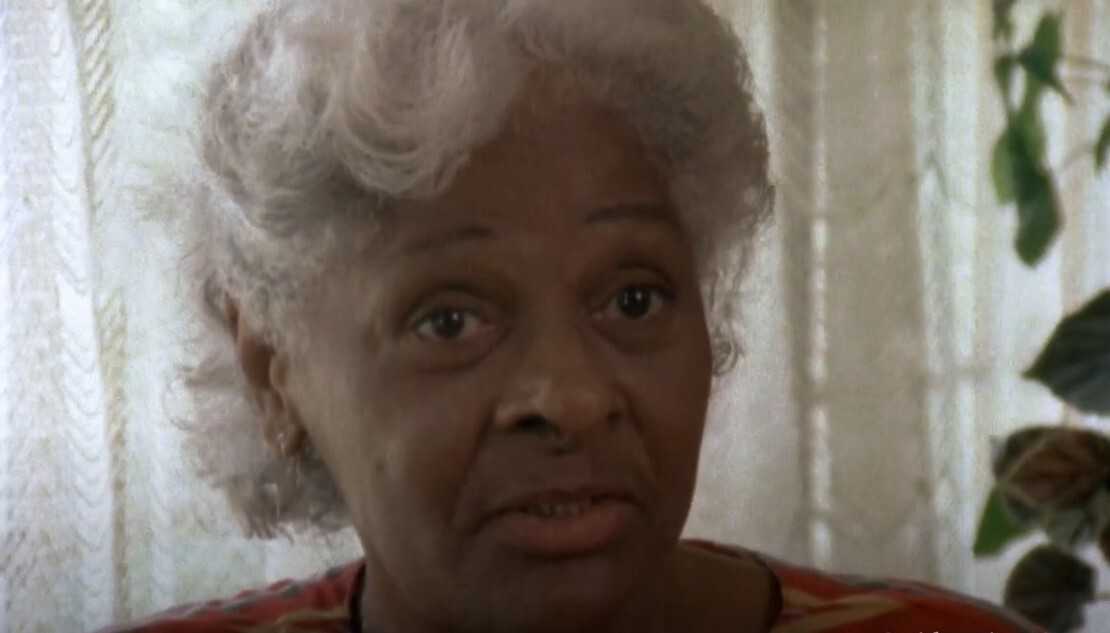Citizenship Schools
Civil rights leaders included education along with protests and strikes when they established Citizenship Schools in rural areas.
Strategies for Participation
Septima Clark leading teacher-training workshop, 1961
Between 1957 and 1970 civil rights activists established nearly 900 Citizenship Schools in rural areas throughout the South. The immediate goal of this grassroots educational campaign was to help African Americans pass the literacy tests required for voter registration. However, the schools also trained people to become activists themselves and work for change in their own communities. Septima Clark, co-founder and director of the program, summarized its mission: “Literacy means liberation.”
Featured Video
“We Are Going to Learn Together”
This video presents an interview with Bernice Robinson (1914–1994), a civil rights activist who attended workshops at Highlander Folk School in the 1950s. She became the first teacher in the Citizenship Schools program.
In 1952, a woman from here [Charleston, South Carolina] went to Washington, D.C., to a conference ... when she came back, she said that there was a place in Tennessee where Blacks and whites could work together on problems. And down here we couldn’t even speak to each other. So, I felt that was a wonderful place to go.
Septima Clark
“Teach My People How to Read and Write”
Citizenship Class, Johns Island, South Carolina, ca. 1960
SCLC education director Dorothy Cotton leading a Citizenship Education workshop, 1960s
The Highlander Folk School in Tennessee was an interracial training center for civil rights activists founded by Myles Horton in 1932. Begun as an educational institution for the poor and working people of Appalachia, Highlander became a gathering place and training center for civil rights activists in the 1950s. As one of the only fully integrated programs in the South, Highlander hosted interracial workshops where participants such as Septima Clark, Rosa Parks, Esau Jenkins, and Bernice Robinson engaged in lively conversations to develop strategies and bring change to their own communities. Robinson credits the Highlander workshops as the source for the idea of Citizenship Schools needed in rural communities across the South. In order to register to vote, the working poor needed to learn to read and write.
In 1961, when the State of Tennessee revoked its license in retaliation for its civil rights activities, the Highlander Folk School was forced to close. The Southern Christian Leadership Conference absorbed the Citizenship School program.
Education Is Activism
SCLC Citizenship Workbook Cover, ca. 1962
Voter registration lesson from SCLC Citizenship Workbook, ca. 1962
Phonetics lesson from SCLC Citizenship Workbook, ca. 1962
The Citizenship Schools program became a cornerstone of the SCLC’s voter registration campaign during the 1960s. Led by Rev. Martin Luther King Jr., the organization emphasized education along with nonviolent protest as tactics to secure civil rights. SCLC built on the innovative work of Highlander Folk School participants who had previously developed strategies for adult education that focused on literacy and grassroots activism. Providing reading and writing skills to people in rural areas was a stepping stone to civic engagement and voter registration. Educator Bernice Robinson stated, “It’s like light coming into the darkness. Once they learn how to read and write, they always voted after that.”
The Algebra Project, Inc.
The Algebra Project asserts that math and science are critical skills for full citizenship participation in the 21st century.
Former SNCC member Bob Moses (1935–2021) recognized the next challenge for activists was to foster educational goals that would help the most vulnerable populations to achieve math literacy. Moses viewed the effort as a continuation of his grassroots work to ensure political access for African Americans when the right to vote depended on literacy skills; now, he would work to strengthen economic access, because full participation as competent citizens in a technological society required math literacy. The Algebra Project, an incorporated non-profit organization founded by Moses in 1982, provides a national program for math learning that is student-centered and experience-based, aiming to empower students through mathematical understanding.
In those days [1950s and 1960s] the issue was the Right to Vote, the question was Political Access, and associated with both of these was a literacy question around reading and writing. In these days there is another issue which is math and science literacy. It is associated with, not political access, but economic access.
Bob Moses, 1993
